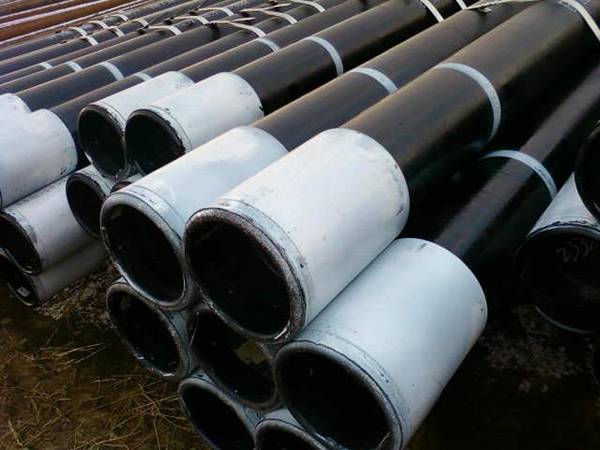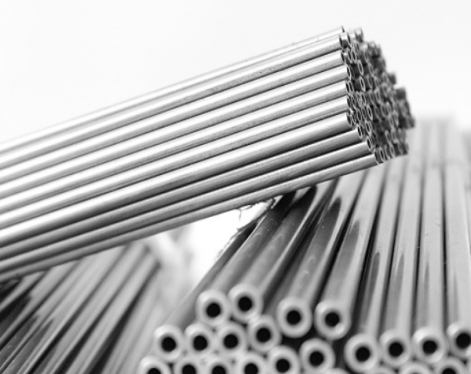Steel casing is a thin-walled steel pipe used in oil pipelines, oil wells, and natural gas wells. It can withstand high pressure, high temperature and corrosive media. The following are some of the major steel casing standards.
1.API5CT
API5CT is a petroleum casing standard formulated by the American Petroleum Institute, including different grades of casing, such as H40, J55, K55, N80, L80, C90, C95, P110 and Q125.
2. ISO 11960: Petroleum casing standard formulated by the International Organization for Standardization, similar to API 5CT, including different grades of casing.
3.GB/T 9711.1: Petroleum casing standards formulated by the China National Standardization Organization, including L175, L210, L245, L290, L320, L360, L390, L415, L450, etc.
4.SY/T6194: Petroleum casing standard formulated by China Petrochemical Industry Standards, including Casing and Tubing types, used at different depths and conditions of oil wells.
These standards specify the size, chemical composition, mechanical properties, quality requirements, etc. of oil casing to ensure its safety and reliability during oil and gas extraction.

Types of steel casing
Steel casing can be divided into: conduit, surface casing, technical casing and oil layer casing according to usage.
Guide sleeve: Mainly used for drilling in oceans and deserts to separate seawater and sand to ensure smooth drilling.
Surface casing: Mainly used for the first drilling, drilling through the soft surface stratum to the bedrock. In order to seal this part of the stratum from collapse, it needs to be sealed with surface casing. Surface oil casing protection drill
The well is protected from contamination by shallow water and gas layers, supports wellhead equipment and maintains the weight of other layers of casing.
Technical casing - Separates the pressure at different levels to facilitate the normal flow of drilling fluid and protect the production casing so that anti-burst devices, anti-leak devices and tail pipes can be installed in the drilling well.
Reservoir oil casing (production casing): extracts oil and natural gas from reservoirs beneath the earth's surface and is used to protect drilling wells and separate drilling mud into layers. When producing oil casing, the outer diameter usually ranges from 114.3 mm to 508 mm.
Steel grade of steel casing
According to the strength of the steel itself, steel casing can be divided into different steel grades, namely J55, K55, N80, L80, C90, T95, P110, Q125, V150, etc. Different well conditions and well depths require different steel grades. In corrosive environments, the casing itself is also required to have corrosion resistance. In places with complex geological conditions, the casing is also required to have anti-collapse properties.
How to choose the right steel casing?
When selecting steel casing, there are several factors to consider:
1. Material: High-quality anti-corrosion and wear-resistant materials should be selected, such as polyurethane, chlorinated polyvinyl chloride, polyester, etc., to ensure the anti-corrosion and wear-resistant properties of the casing.
2. Specifications: According to the diameter and length of the oil pipe that needs to be protected, select the casing of the corresponding specifications to ensure that it can completely cover the oil pipe.
3. Thickness: Thickness is one of the important indicators to measure the quality of casing. A casing with moderate and uniform thickness should be selected to ensure its strength and wear resistance.
4. Production technology: Choose casings with exquisite production technology, tight braiding layer, smooth surface and no burrs to ensure their quality and reliability.
1.API5CT
API5CT is a petroleum casing standard formulated by the American Petroleum Institute, including different grades of casing, such as H40, J55, K55, N80, L80, C90, C95, P110 and Q125.
2. ISO 11960: Petroleum casing standard formulated by the International Organization for Standardization, similar to API 5CT, including different grades of casing.
3.GB/T 9711.1: Petroleum casing standards formulated by the China National Standardization Organization, including L175, L210, L245, L290, L320, L360, L390, L415, L450, etc.
4.SY/T6194: Petroleum casing standard formulated by China Petrochemical Industry Standards, including Casing and Tubing types, used at different depths and conditions of oil wells.
These standards specify the size, chemical composition, mechanical properties, quality requirements, etc. of oil casing to ensure its safety and reliability during oil and gas extraction.

Types of steel casing
Steel casing can be divided into: conduit, surface casing, technical casing and oil layer casing according to usage.
Guide sleeve: Mainly used for drilling in oceans and deserts to separate seawater and sand to ensure smooth drilling.
Surface casing: Mainly used for the first drilling, drilling through the soft surface stratum to the bedrock. In order to seal this part of the stratum from collapse, it needs to be sealed with surface casing. Surface oil casing protection drill
The well is protected from contamination by shallow water and gas layers, supports wellhead equipment and maintains the weight of other layers of casing.
Technical casing - Separates the pressure at different levels to facilitate the normal flow of drilling fluid and protect the production casing so that anti-burst devices, anti-leak devices and tail pipes can be installed in the drilling well.
Reservoir oil casing (production casing): extracts oil and natural gas from reservoirs beneath the earth's surface and is used to protect drilling wells and separate drilling mud into layers. When producing oil casing, the outer diameter usually ranges from 114.3 mm to 508 mm.
Steel grade of steel casing
According to the strength of the steel itself, steel casing can be divided into different steel grades, namely J55, K55, N80, L80, C90, T95, P110, Q125, V150, etc. Different well conditions and well depths require different steel grades. In corrosive environments, the casing itself is also required to have corrosion resistance. In places with complex geological conditions, the casing is also required to have anti-collapse properties.
How to choose the right steel casing?
When selecting steel casing, there are several factors to consider:
1. Material: High-quality anti-corrosion and wear-resistant materials should be selected, such as polyurethane, chlorinated polyvinyl chloride, polyester, etc., to ensure the anti-corrosion and wear-resistant properties of the casing.
2. Specifications: According to the diameter and length of the oil pipe that needs to be protected, select the casing of the corresponding specifications to ensure that it can completely cover the oil pipe.
3. Thickness: Thickness is one of the important indicators to measure the quality of casing. A casing with moderate and uniform thickness should be selected to ensure its strength and wear resistance.
4. Production technology: Choose casings with exquisite production technology, tight braiding layer, smooth surface and no burrs to ensure their quality and reliability.
Previous:Sheet pile wall









